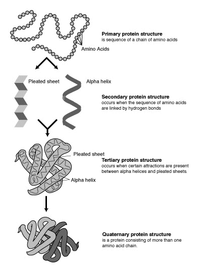
Photo from wikipedia
Abstract The prediction of drug-target interactions plays an important role in the drug discovery process, which serves to identify new drugs or novel targets for existing drugs. However, experimental methods… Click to show full abstract
Abstract The prediction of drug-target interactions plays an important role in the drug discovery process, which serves to identify new drugs or novel targets for existing drugs. However, experimental methods for predicting drug-target interactions are expensive and time-consuming. Therefore, the in silico prediction of drug-target interactions has recently attracted increasing attention. In this study, we proposed a kernel matrix dimension reduction method (KMDR) for predicting drug-target interactions, and in order to facilitate benchmark comparisons, two other representative algorithms, the Regularized Least Squares classifier (RLS) and the semi-supervised link prediction classifier (SLP), were also used to predict drug-target interactions on a same dataset. The results show that the kernel matrix reduction dimension method could improve the performance on drug-target interaction prediction; in particular, KMDR could significantly improve performance on low degree drug target interaction prediction. We further show that, in theory, the formulations of above three algorithms have a unified form, which could be seen as a kernel matrix transformation based on eigenvalue. This finding could provide us a research direction -- to design better algorithms for predicting drug-target interaction by optimize kernel matrix transformation based on eigenvalue.
Journal Title: Chemometrics and Intelligent Laboratory Systems
Year Published: 2017
Link to full text (if available)
Share on Social Media: Sign Up to like & get
recommendations!